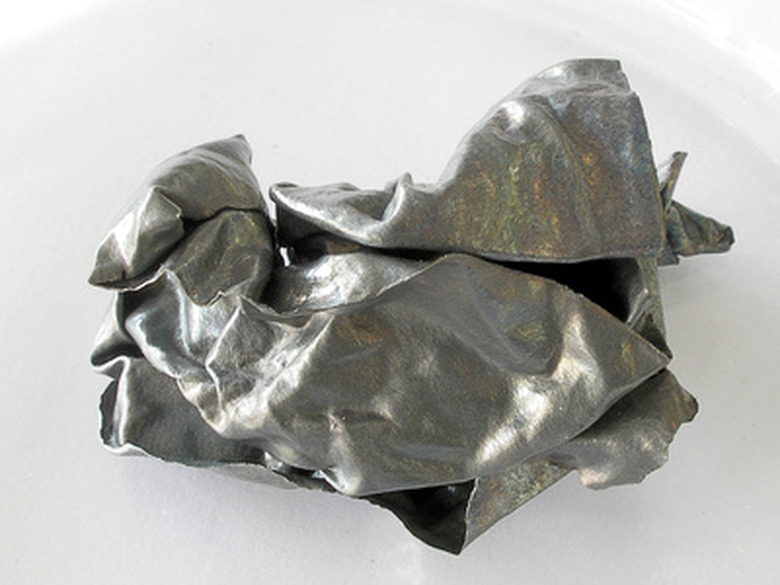How Do I Compare 4140 & 4150 Steel?
Superman may be the "man of steel," but a discerning scientist might ask: which type?
While steel is one of the strongest and most important materials on Earth, with uses from common household items like paperclips to the girders in skyscrapers and automobile shells, not all steel is equal. Two of the most common steel alloys, 4140 and 4150 steel, differ in strength as well as the conditions under which they are usable.
What Are 4140 and 4150 Steel?
What Are 4140 and 4150 Steel?
Steel is an alloy, or a mixture of more than one element. It is primarily iron, with about 1 percent carbon and sometimes small amounts of other materials.
4140 and 4150 steel are two extra strong and hard alloys of steel. In addition to carbon, they each contain 0.80 to 1.10 percent chromium and 0.15 to 0.25 percent molybdenum.
4140 Versus 4150 Steel
4140 Versus 4150 Steel
The Society of Automotive Engineers, or SAE, and the American Iron and Steel Institute, or AISI, use a four-digit system to designate the chemical composition of steel. For steel alloys, the first two digits indicate the major alloying elements present, and the last two digits give the carbon content in hundredths of a percent. This means that 4140 and 4150 steels have the same alloying elements, chromium and molybdenum, but 4150 steel has more carbon.
In terms of their properties, the differences between 4140 and 4150 steel include:
- Tensile strength, which describes the maximum stress from pulling that a material can withstand before it begins to break. A 4150 material has higher tensile strength than a 4140 material.
- Ductility and workability, which refer to how easily the steels are to use. While both 4140 and 4150 steel can be welded easily, 4140 material is more known for its ductility, or ability to bend and the fact that it can be used in cold working conditions. 4150 material, on the other hand, must be heat-treated before use.
D2 Versus 4140 Steel
D2 Versus 4140 Steel
Another common iron alloy found in tools is known as D2. It is 86 percent the same as 4140 steel, but notably contains a higher percentage of carbon and chromium. D2 steel can have the highest ductility among steel tools.
Heat Treatment of Steel Alloys
Heat Treatment of Steel Alloys
Manufacturers can set the material properties of different steels, including D2, 1440 and 1450 steels, by a process known as heat treatment. Carefully controlling how heat is applied to a carbon alloy steel changes the molecular arrangement inside the steel, which leads to its differing properties.
For example, steel alloys that are annealed are brought to a high temperature in a furnace, then allowed to cool slowly. This option results in steel with more ductility and less brittleness, meaning it won't break from internal stresses as easily as another option.
Meanwhile tempering is a heat treatment that occurs at lower temperatures and increases the toughness and ductility of a material, although it also somewhat reduces its strength. The more ductility that is gained, the more strength is lost, but usually not so much to change the use case of the steel. Other materials, including aluminum, are tempered the same way.
Other Steel Alloys
Other Steel Alloys
In addition to carbon, chromium and molybdenum, several other elements are commonly used to form steel alloys with specific properties. These include cobalt, manganese, tungsten and vanadium.
Besides 1440 and 1450 steel, the most common alloys are 4340 (nickel-chromium-molybdenum steel), 6150 (chromium-vanadium steel) and 8620 (HSLA steel).
HSLA stands for "**high-strength low-alloy,**" which means the steel is designed to meet specific mechanical requirements rather than chemical compositions. Therefore, a given type of HSLA steel alloy might in fact have varying amounts of elements added to it. In descending order of percentages, 8620 steel is composed of: iron, carbon, silicon, molybdenum, manganese, nickel, chromium, sulfur and phosphorus.
Cite This Article
MLA
Dusto, Amy. "How Do I Compare 4140 & 4150 Steel?" sciencing.com, https://www.sciencing.com/facts-7621048-do-compare-4140-4150-steel/. 19 May 2020.
APA
Dusto, Amy. (2020, May 19). How Do I Compare 4140 & 4150 Steel?. sciencing.com. Retrieved from https://www.sciencing.com/facts-7621048-do-compare-4140-4150-steel/
Chicago
Dusto, Amy. How Do I Compare 4140 & 4150 Steel? last modified August 30, 2022. https://www.sciencing.com/facts-7621048-do-compare-4140-4150-steel/
